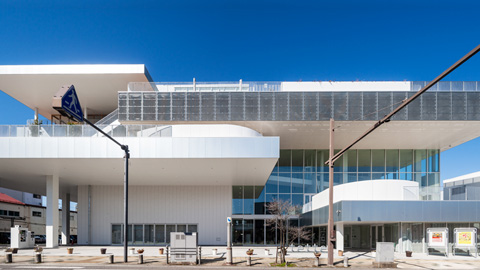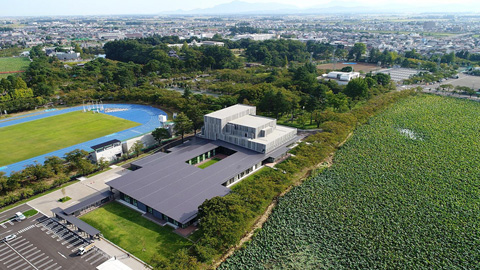Halls/Museums/Libraries
-
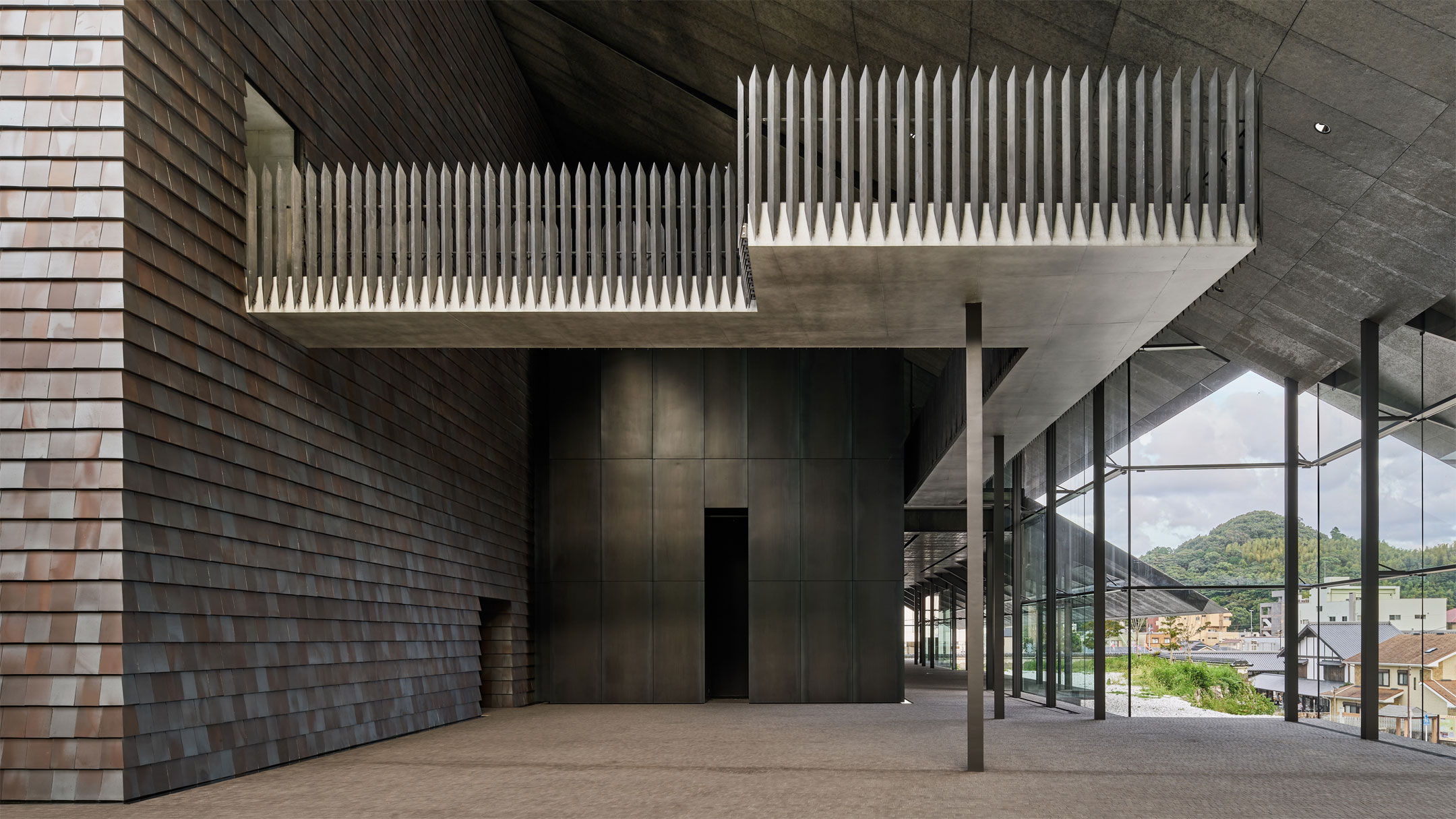
Tsushima Museum
-
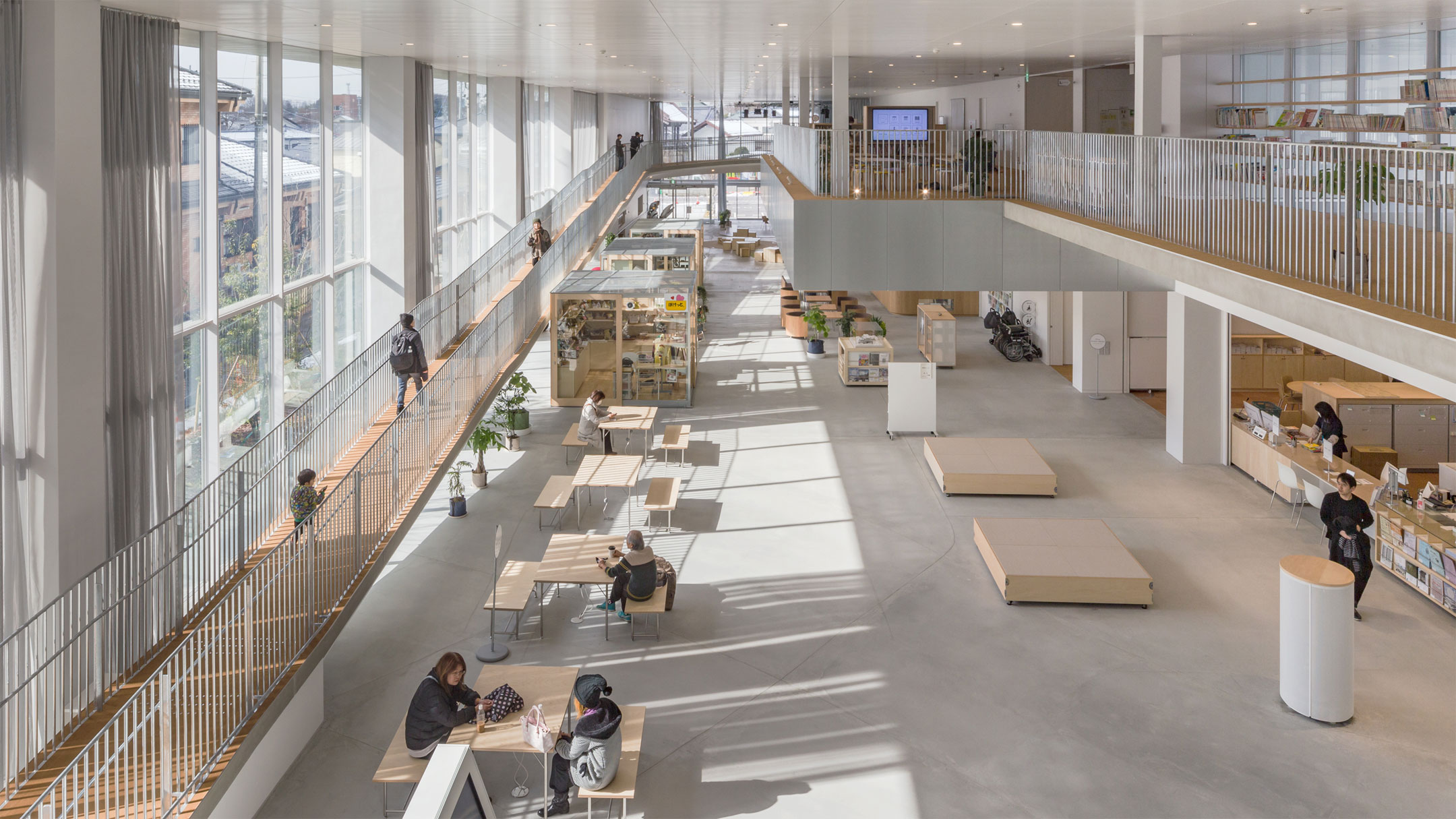
Sukagawa Community Center tette
-
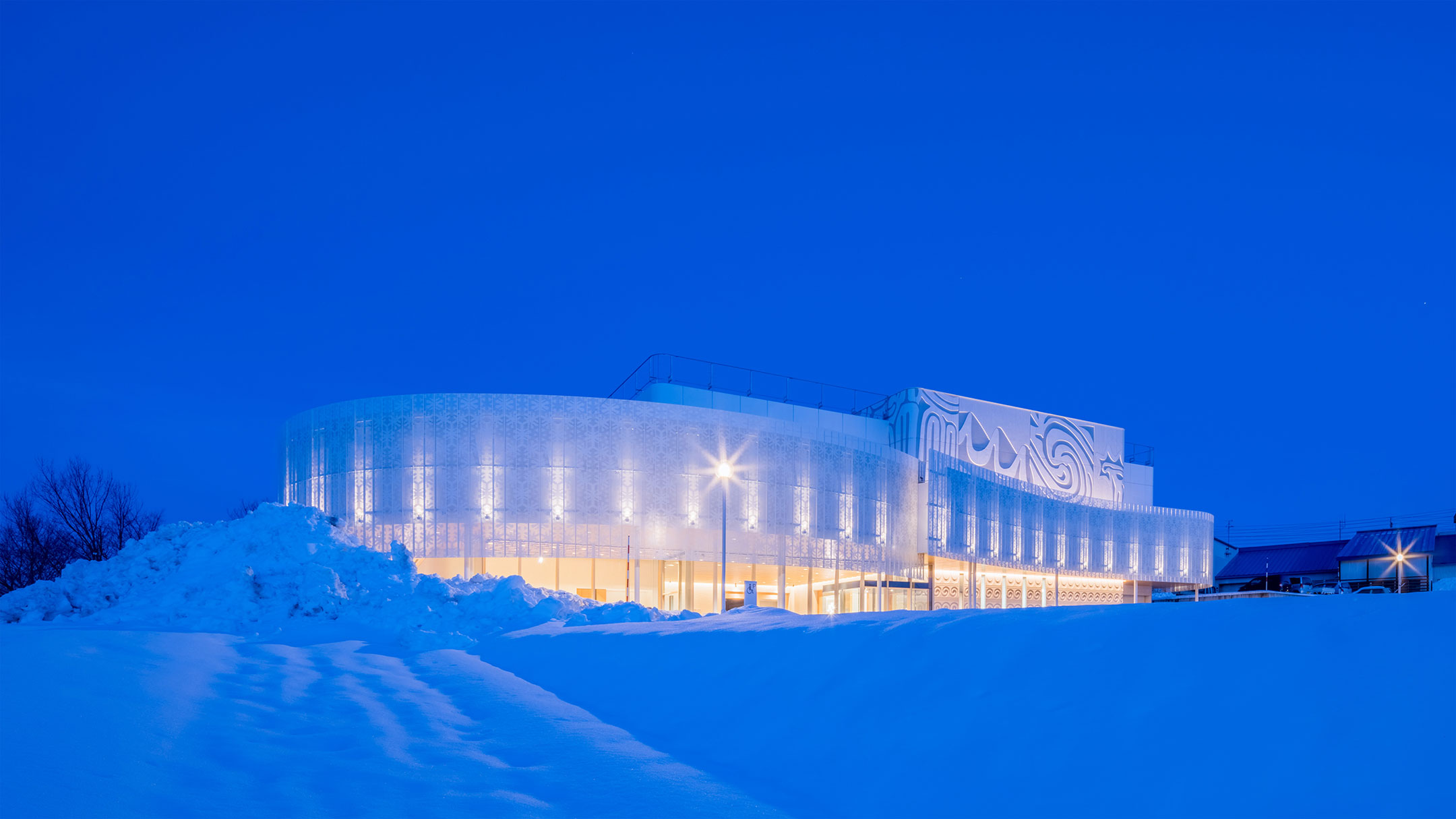
Tokamachi City Museum
-
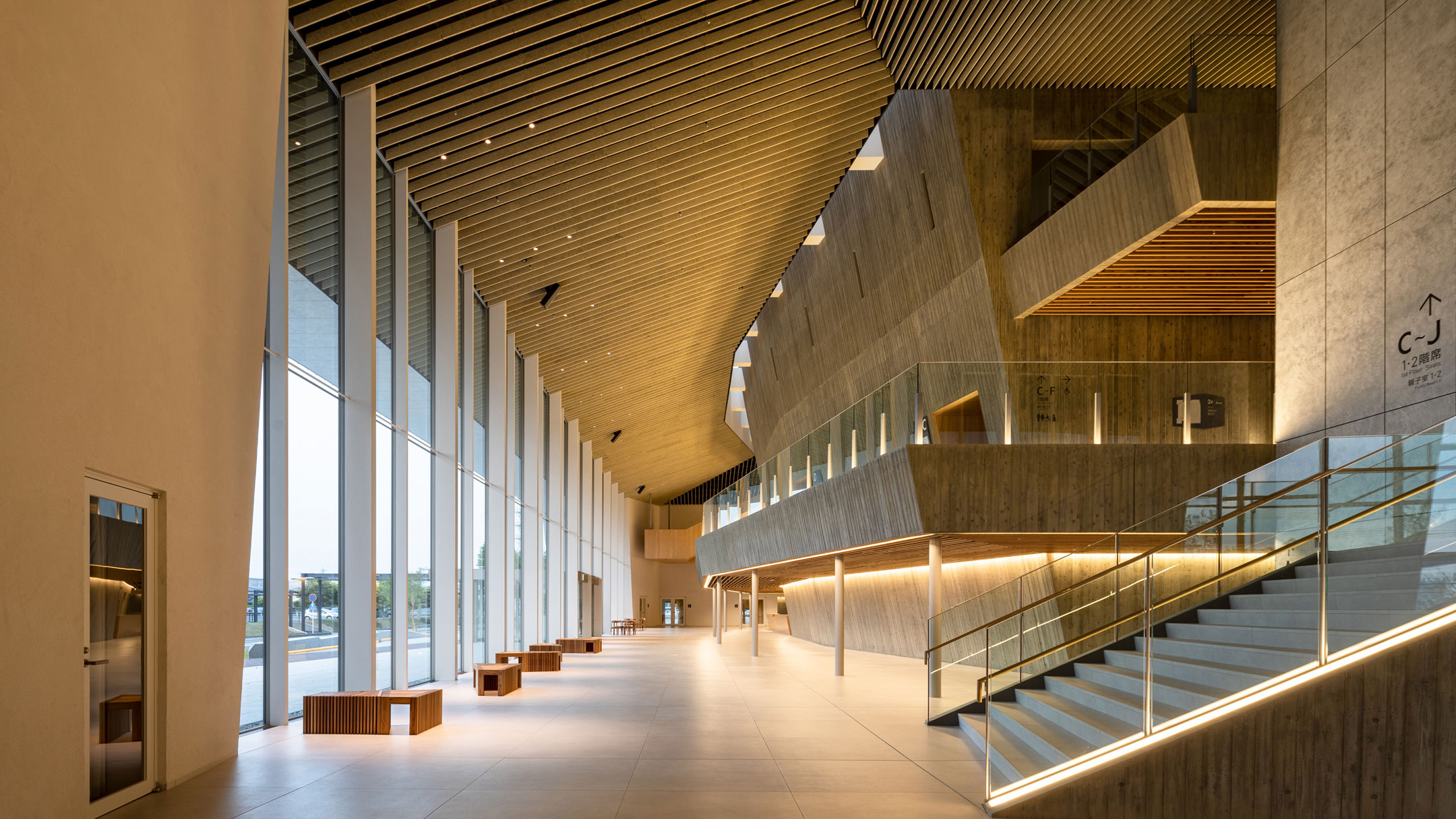
Iwata Civic Cultural Center “Kataria”
-
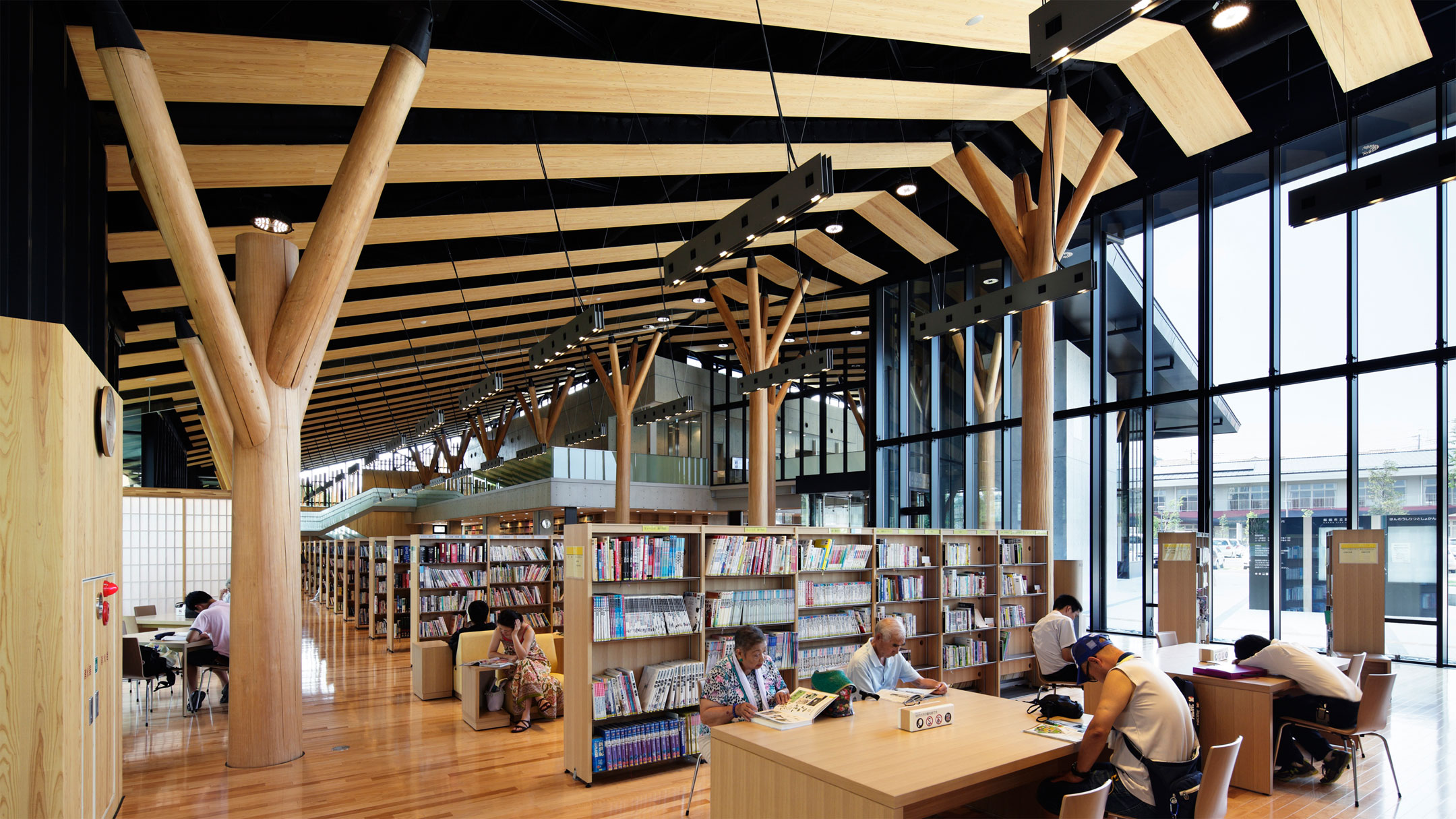
Hanno City Library
-
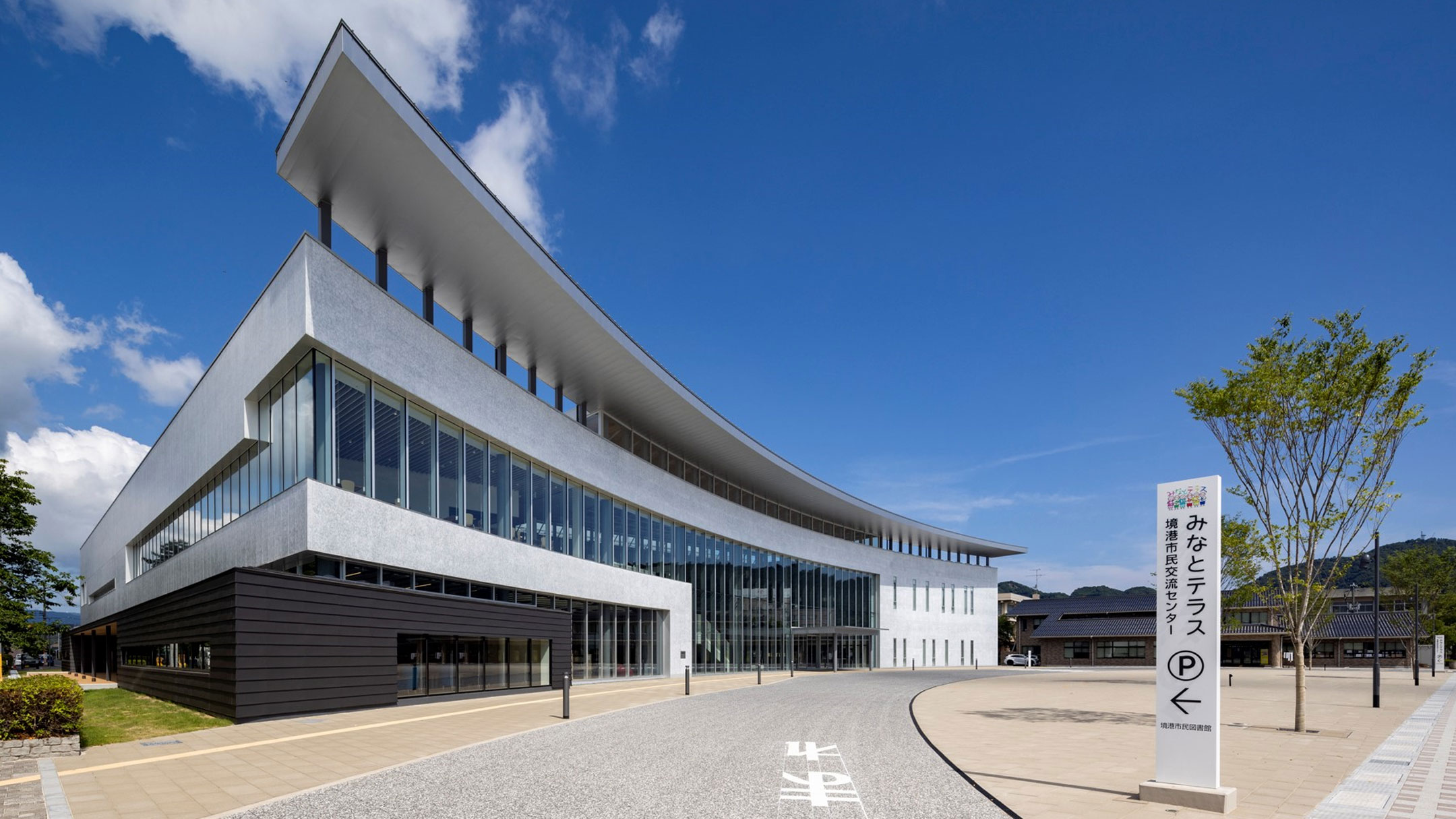
Minato Terrace Sakaiminato Civic Center
-
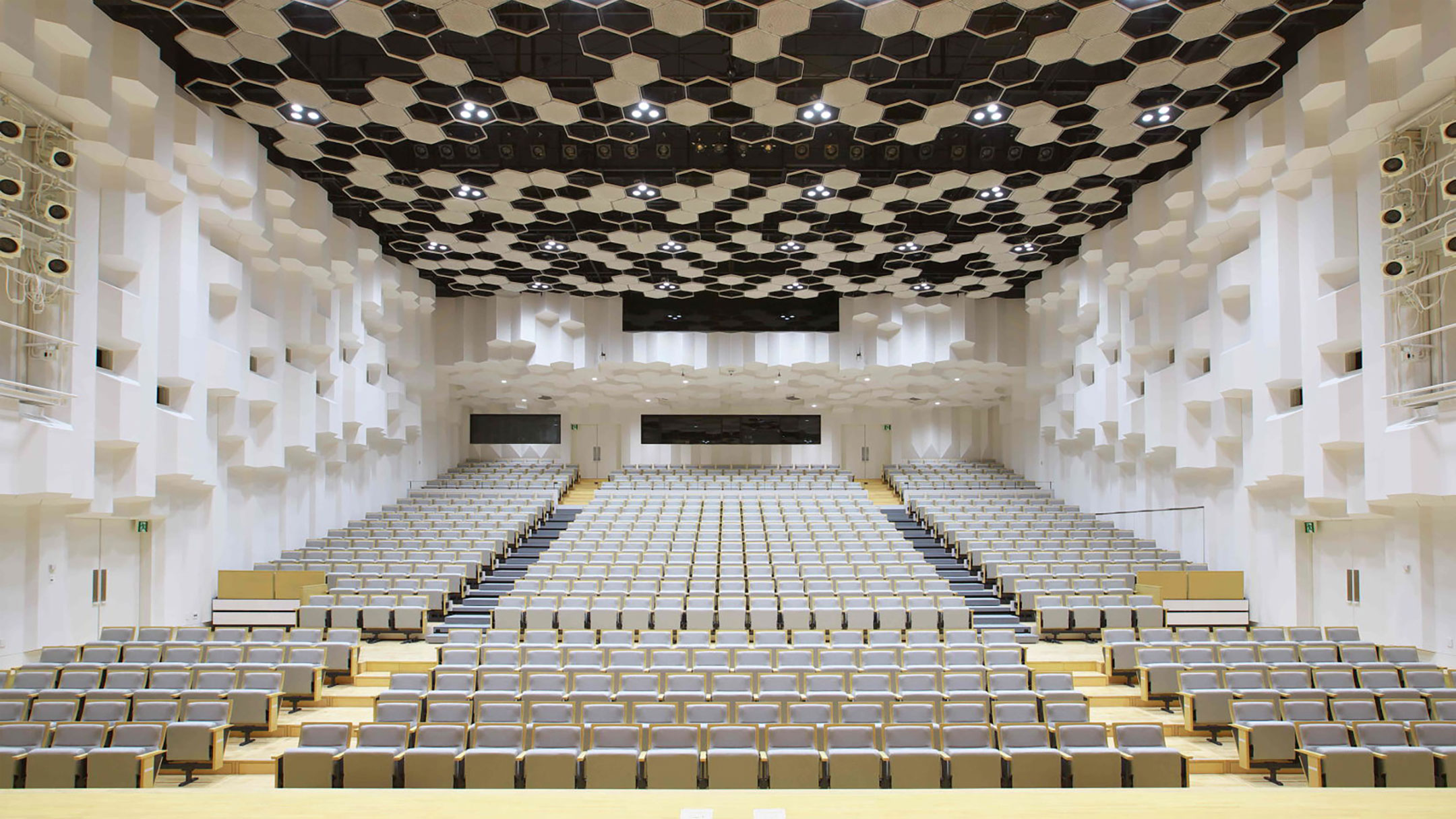
Joetsu City Civic Exchange Facility Takada Castle Ruins Park Auren Plaza
-
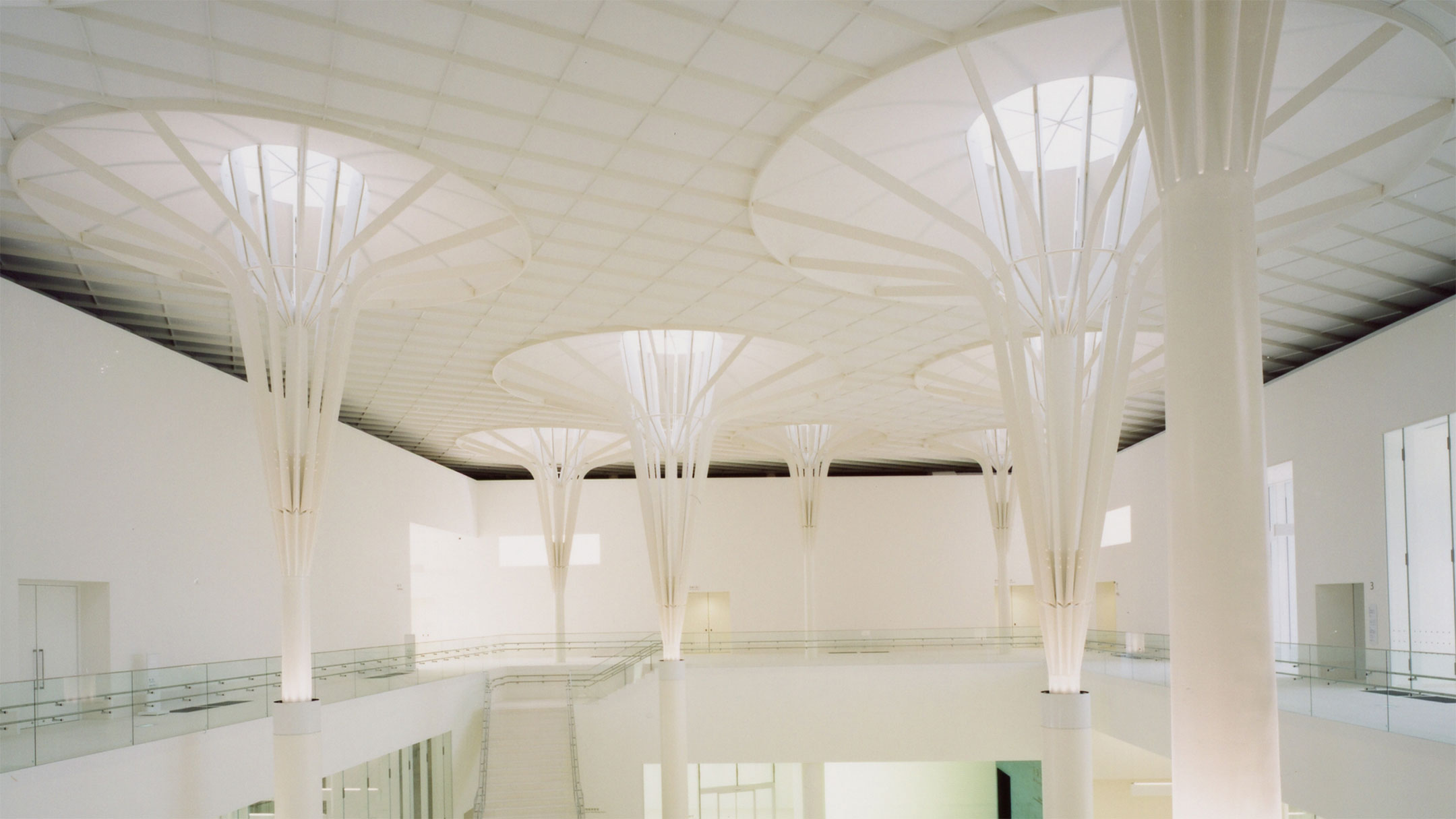
Okinawa Prefectural Museum and Art Museum
CONCEPT
Stimulate people’s exchange through cultural activities
The word “culture” has a meaning of “Cultivation: Teaching and nurturing, contributing to others.” Cultural Facilities are places where relics and information are archived and exposed to satisfy intellectual desire, and present daily fulfillments and activities, and those lively activities inspire people’s emotions and empathy, and encourage exchanges. In this way, we design with the aim of creating architecture that contributes to human and cultural life through architectural design.
INTERVIEW

Ko Ohashi, Architectural Group, Design Division, Tokyo Office
Kazuki Sogo, Architectural Group, Design Division, Tokyo Office
Tatsuya Takamatsu, Architectural Group, Design Division, Nagoya Office
“Symbolism” that brings about the extraordinariness and “affinity” that snuggles to everyday life
Hatazawa: We designed different types of hall facilities, the Iwata Civic Cultural Center, which is a full-scale theater with 1,500 seats, and the Sakaiminato Civic Center, which has a hall that accommodates various civic activities with movable seats, and as a common theme, we aimed to realize the facilities where citizens can feel a sense of affinity through daily use as well as a sense of elation through getting in touch with entertainment. For example, at Iwata Civic Cultural Center, the rooms for rehearsals and practice, which are generally located in the backside, are located in the area for general public as “creative activity rooms” and are provided as spaces for daily use by citizens.
Takamatsu: In the case of Iwata Civic Cultural Center, we kept in mind that the construction site is located in an area where the city’s cultural facilities are gathered, so it will be a facility that can be an “anchorage” for the citizen, where people using the facilities around it can easily drop by. As part of the layout planning, we gazed at the future shape of the area as a whole and considered the placement of facilities in concert with the surrounding facilities.
Ohashi: We did this at the Tsushima Museum, and we bear in mind to find “Unique Designs” that are unique to the place, from the entire space to the details. I believe that thoughtfully built items will be understood by visitors, and I believe that those designs, which are not generic, will lead to providing visitors with an experience which is worthwhile for visiting. In order to do this, we learn well about the history, culture, geography, and people involved in the project, and identify the elements that should be looked after well. The process of sharing it with the client and putting it into the design is important.
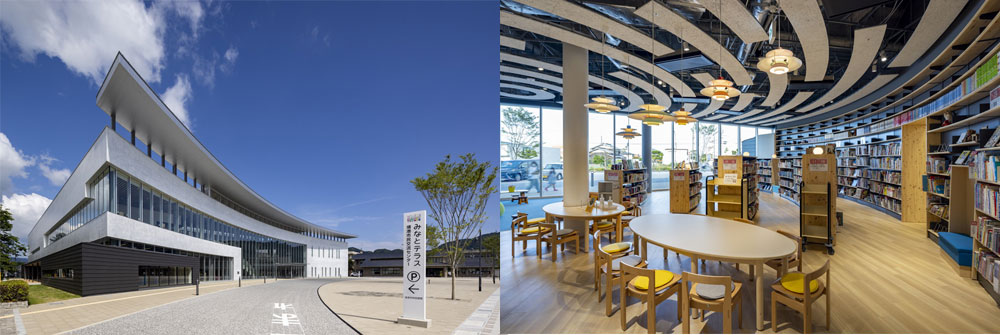
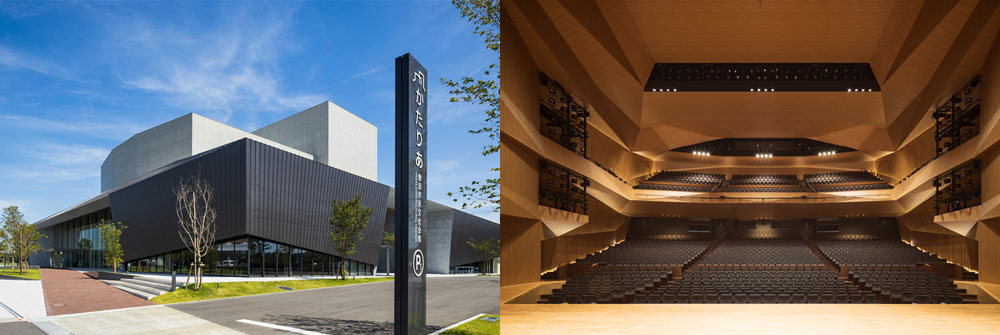
The “Place of Exchange” created by “Combination” and “Fusion” of applications
Sogo: The concept of libraries has changed over the last 20 years or so. In the past, it was mainly a place to read and study quietly, but nowadays, it has shifted to a place with a café-like atmosphere that tolerates a certain amount of noise. This is the beginning of a trend to regard libraries as “Places of Exchange.” Furthermore, there is a tendency for libraries to be programmed with the idea that they can be combined with other uses to encourage citizen’s exchange more, and libraries will be more active.
Hatazawa: The Sakaiminato Civic Center is also a complex of halls, libraries, cafes, and student study areas. When I saw the crowd of junior high and high school students on weekday evenings, I was happy as a designer to see the scene symbolizing the merits of combining. In addition, there seems to be a lot of use in cooperation with the adjacent city park for various events.
Sogo: In the case of the Sukagawa Community Center, we are working on “Fusion” that goes beyond “Combination” of uses. The single category of libraries was dismantled and restructured in the form that related books were distributed to other uses such as halls and exhibitions. It is an idea to understand that the library deals with “information” rather than “books,” and snuggle related information to each respective field. In this sense, the library may be a function that has a high affinity with the “Combination” and “Fusion” of uses. In “Sukagawa,” we can see the synergistic effect that citizens drop by and spend time with multiple uses, even if they have no specific purpose.
With regard to this “fusion of uses,” the needs of citizens with diverse attributes were repeatedly heard and discussed at the citizen workshop at the time of design. I believe that this process has led to the creation of an unprecedented type of facility and the movement of government and citizens to realize it.
Ohashi: With the tendency that local governments reduce public facilities due to population decrease and other factors in the future, the idea of creating a combined and integrated space rather than creating facilities for each traditional vertically divided function fits well. For an ambiguous request from a local government, such as “a place where citizens can visit easily is required,” we already have know-how about the process.
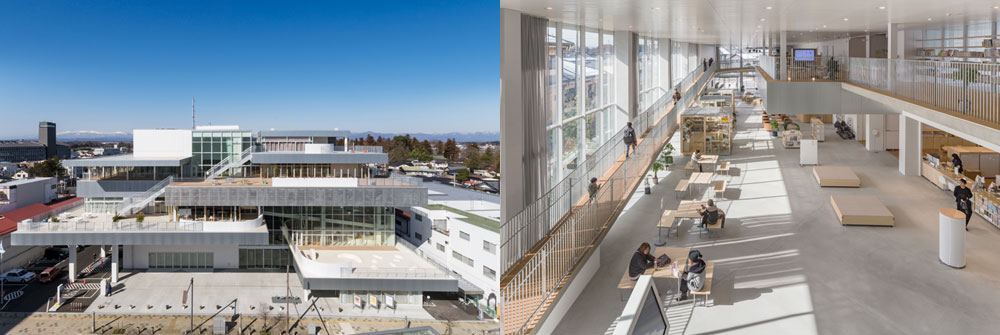
Facing “Time” and creating a “Place Which Is Nowhere but Here”
Ohashi: The museum has a mission to store items in units of 100 and 1,000 years, which far exceed the life of its building. Because these collections, which are the property of mankind, should not be damaged, a museum building could be a functionally focused building with a robust structure, a stable internal environment, etc., and it could be an inorganic and industrial type of building like a shelter. But in fact, the majority of museums are beautiful and symbolic, capturing each specialty. I think people also expect the museum itself to be able to reflect the historical background, the values, and the characteristics of the area where it will be built. It can be a point of pride for the area and a place to ferment memories for visitors. Furthermore, since museums are built “now,” to make a big thing of it, we are engaged in designing with the spirit to create a heritage, which symbolizes our current era, for the next era.
Takamatsu: Although using the hall for a coming-of-age ceremony or a recital is momentary, the memory will be with the person for decades. We believe that the building that will be the scene of this event must have a strong design that will not be weathered over time, so that it can snuggle up to the proud memories of the place and become the earliest remembered scene of each citizen. As a designer, I am very conscious of that.
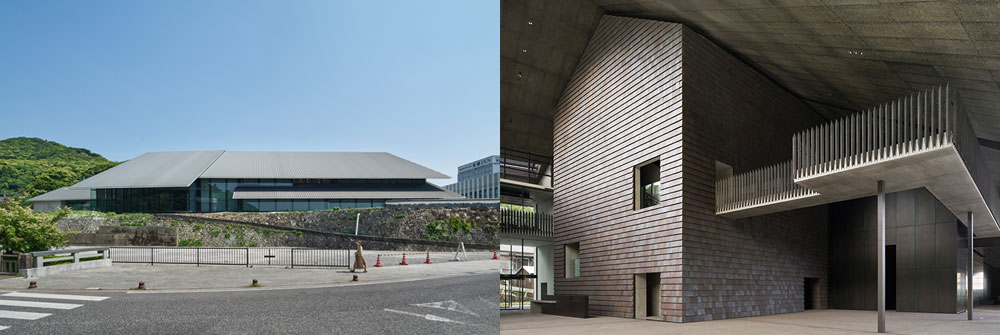
What we can do for cultural facilities in the future
Hatazawa: I am in charge of designing several cultural facilities in local cities, including the two projects introduced here. Through each design experience, I came to believe that the local people’s attachment to cultural facilities is very valuable to the town and its citizens. While it is important to seek architectural balance and rationality, we would like to keep seeking to create facilities that are special to the region, such as weaving local materials and elements into the design and daring to create a place with a heterogeneous “uneven feeling.”
Takamatsu: I, too, think it is the mission of designers to create things that are nowhere but there. In particular, the hall building, which is a festive space, should evoke the appropriate surprise and excitement. We want strive to create a space where visitors with expectation and elation feel the “story” in the sequence of approaching the building, going through the entrance, going up the stairs from the lobby, and opening the hall door.
Ohashi: Cultural facilities do not directly affect the survival of human beings themselves. Paradoxically speaking, the fact that it has been cherished today may symbolize that humans seek a more humane way of living. Therefore, It is respectable that the clients determine to create a good cultural facility. In the case of Tsushima Museum, I was impressed by the thoughts of the local government and its citizens. I think it is our mission to meet that expectation.
Sogo: The discussion about whether we still need libraries and other cultural facilities is not new. Now, books, entertainment, and works of art can be easily appreciated through various media such as the Internet. But I think what is important is the “authentic experience” that can be obtained by directly facing culture and art in the place, and the “exchange experience” in which new value can be created by meeting people. We believe that it is the raison d’etre of architecture to provide such rich experiences, and we will continue striving for creation.

